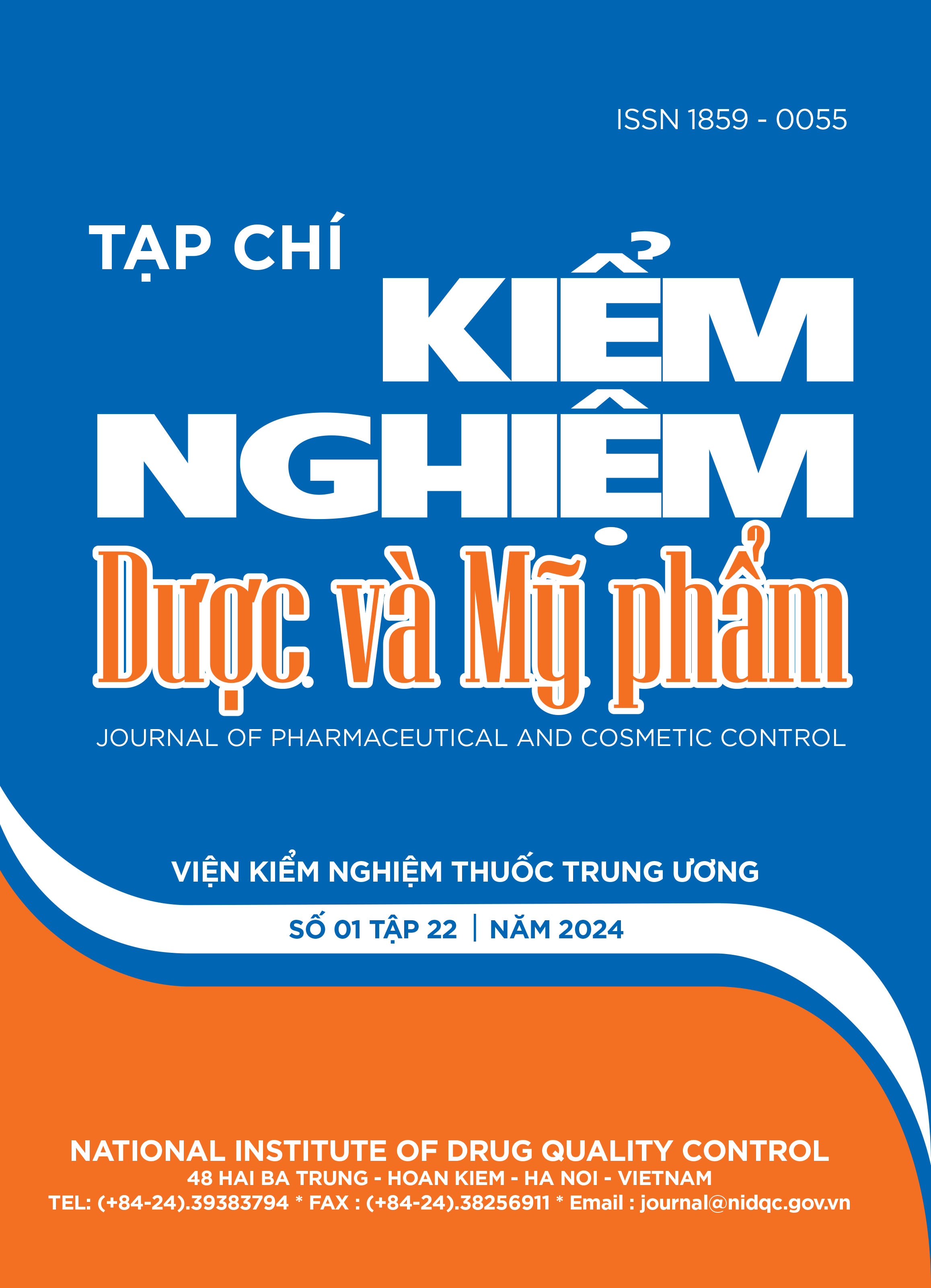Quantification of itopride in human plasma by high performace liquid chromatoghraphy couple with fluorescence detector
Main Article Content
Abstract
A new method was developed for determination of itopride in human plasma by high-performance liquid chromatography (HPLC) with fluorescence detection (excitation at 265 nm and emission at 344 nm). The method employed one-step extraction of itopride from human plasma with tert-butyl methyl ether using alfuzosin hydrochloride as an internal standard. Chromatographic separation was obtained within 10 min using a reverse phase column (C18, 250 mm × 4.6 mm, 5 µm) and an isocratic mobile phase constituting of acetonitrile, tetrahydrofuran and pH 3.5 buffer (suitable ratio) at a flowrate of 1.2 ml/min. The method was linear in the range of 5 to 1000 ng/ml. The lower limit of quantitation was 5 ng/ml. The intra and inter-day accuracy were within between 86.2 % and 108.5 %. Plasma sample containing itopride were stable for 100 days at -35 oC and for 6 hours at room temperature. This method can be used for BA-BE studies of itopride preparations.
Article Details
Keywords
Itoprid, bioequevalence, HPLC-RF
References
2. Lee H.-W., J.-H. Seo, S.-K. Choi, and K.-T. Lee (2007), Determination of itopride in human plasma by liquid chromatography coupled to tandem mass spectrometric detection: application to a bioequivalence study, Analytica chimica acta, 583 (1), pp. 118-123.
3. Ma J, Yuan LH, Ding MJ, Zhang J, Zhang Q, Xu QW, Zhou XM (2009), Determination of itopride hydrochloride in human plasma by RP-HPLC with fluorescence detection and its use in bioequivalence study, Pharmacological research, 59 (3), pp. 189-193.
4. Singh S.S., M. Jain, K. Sharma, B. Shah, M. Vyas, P. Thakkar, R. Shah, S. Singh, and B. Lohray (2005), Quantitation of itopride in human serum by high-performance liquid chromatography with fluorescence detection and its application to a bioequivalence study, Journal of Chromatography B, 818 (2), pp. 213-220.
5. European Medicines Agency, Committee for Medicinal Products for Human Use (2012), Guideline on Validation of Bioanalytical Methods.
6. U.S Department of Health and Human Services, Food and Drug Administration, Center for Drug Evaluation and Reseach (2018), Guidance for Industry – Bioanalytical Method Validation.


